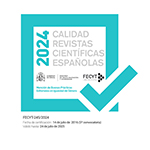Communicative Functions and L1 Use during Conceptual Mediaton: a Comparative Study between CLIL and Traditional Learning
Abstract
Conceptual mediation is one of the competences promoted by the Common European Framework of Reference (CEFR) during the acquisition of one language. In it learners collaborate in the construction of new knowledge to carry out activities by which higher-level cognitive skills are needed (e.g. project work). This study analyses the communicative functions produced by 10 work groups under CLIL instruction (Content Language Integrated Learning) and 10 work groups under a mainstream instruction and compares the L1 amount used during the elaboration of an enrollment form. The quantitative analysis demonstrates that mainstream groups use L1 to a greater degree during interventions aimed at organizing the work (relational mediation) and during the communicative mediation, that is, when they translate their own interventions to guarantee the adequate comprehension among group mates.
Downloads
Article download
License
In order to support the global exchange of knowledge, the journal Didáctica. Lengua y Literatura is allowing unrestricted access to its content as from its publication in this electronic edition, and as such it is an open-access journal. The originals published in this journal are the property of the Complutense University of Madrid and any reproduction thereof in full or in part must cite the source. All content is distributed under a Creative Commons Attribution 4.0 use and distribution licence (CC BY 4.0). This circumstance must be expressly stated in these terms where necessary. You can view the summary and the complete legal text of the licence.










